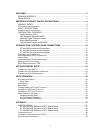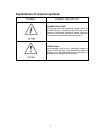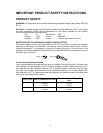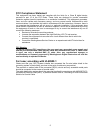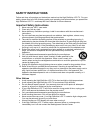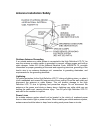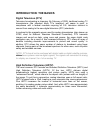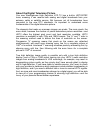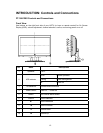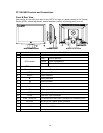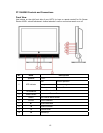
8
INTRODUCTION: THE BASICS
Digital Television (DTV)
Television broadcasting is changing. By February of 2009, traditional analog TV
transmissions (the standard since TV’s inception) will cease to exist, in
compliance with a federal mandate requiring all U.S. television stations to
convert from analog to the new digital television (DTV) standards.
In contrast to the magnetic waves used for analog transmission (also known as
NTSC, short for National Television Standards Committee), DTV transmits
images and sound as data, using ones and zeroes, the same digital code
computers use. As a result of this increased efficiency, DTV offers an array of
benefits including dramatic improvements to picture and sound quality. In
addition, DTV allows the same number of stations to broadcast using fewer
channels, freeing parts of the broadcast spectrum for other uses, such as public
safety and wireless services
NOTE: DTV should not be confused with digital cable or digital satellite systems.
While these systems receive digital signals, the signals are converted to analog
for display on channel 3 or 4 of an analog TV.
High Definition Television (HDTV)
The most common DTV formats are Standard Definition Television (SDTV) and
High Definition Television (HDTV). Of the two, HDTV delivers digital
broadcasting’s highest resolution and picture quality. HDTV also uses a
“widescreen format,” which refers to the aspect ratio (screen width vs. height) of
the image. To put this in perspective, analog television uses a 4x3 aspect ratio;
HDTV’s aspect ratio is 16x9, creating a more cinematic-like viewing experience.
Plus HDTV increases the number of horizontal scan lines on the screen,
enabling it to render greater picture detail. And, while HDTV uses approximately
the same bandwidth, it transmits approximately six times more information,
further enhancing video and audio clarity.




